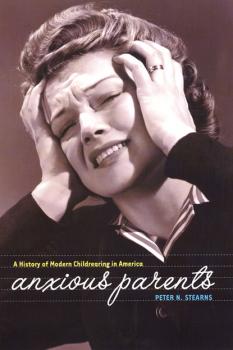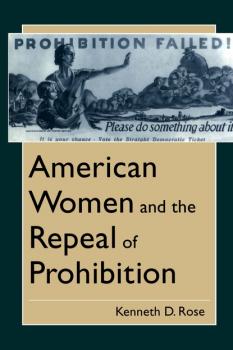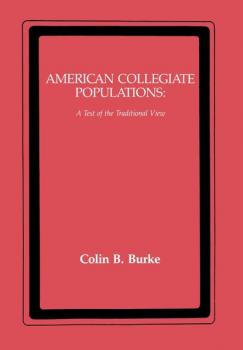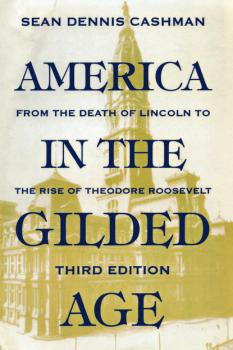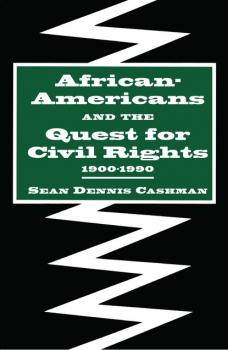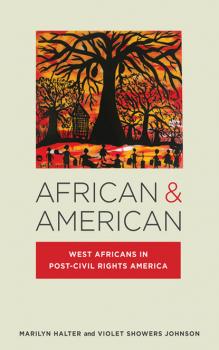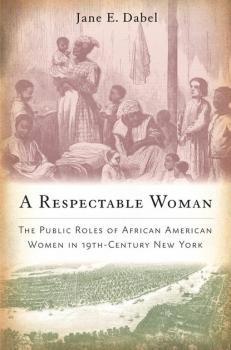ТОП просматриваемых книг сайта:
Историческая литература
Различные книги в жанре Историческая литература, доступные для чтения и скачиванияАннотация
The nineteenth and twentieth centuries saw a dramatic shift in the role of children in American society and families. No longer necessary for labor, children became economic liabilities and twentieth-century parents exhibited a new level of anxiety concerning the welfare of their children and their own ability to parent effectively. What caused this shift in the ways parenting and childhood were experienced and perceived? Why, at a time of relative ease and prosperity, do parents continue to grapple with uncertainty and with unreasonable expectations of both themselves and their children? Peter N. Stearns explains this phenomenon by examining the new issues the twentieth century brought to bear on families. Surveying popular media, *#8220;expert” childrearing manuals, and newspapers and journals published throughout the century, Stearns shows how schooling, physical and emotional vulnerability, and the rise in influence of commercialism became primary concerns for parents. The result, Stearns shows, is that contemporary parents have come to believe that they are participating in a culture of neglect and diminishing standards. Anxious Parents: A Modern History of Childrearing in America shows the reasons for this belief through an historic examination of modern parenting.
Аннотация
In 1933 Americans did something they had never done before: they voted to repeal an amendment to the U.S. Constitution. The Eighteenth Amendment, which for 13 years had prohibited the manufacture and sale of alcoholic beverages, was nullified by the passage of another amendment, the Twenty-First. Many factors helped create this remarkable turn of events. One factor that was essential, Kenneth D. Rose here argues, was the presence of a large number of well-organized women promoting repeal. Even more remarkable than the appearance of these women on the political scene was the approach they took to the politics of repeal. Intriguingly, the arguments employed by repeal women and by prohibition women were often mirror images of each other, even though the women on the two sides of the issue pursued diametrically opposed political agendas. Rose contends that a distinguishing feature of the women's repeal movement was an argument for home protection, a social feminist ideology that women repealists shared with the prohibitionist women of the Women's Christian Temperance Union. The book surveys the women's movement to repeal national prohibition and places it within the contexts of women's temperance activity, women's political activity during the 1920s, and the campaign for repeal. While recent years have seen much-needed attention devoted to the recovery of women's history, conservative women have too often been overlooked, deliberately ignored, or written off as unworthy of scrutiny. With American Women and the Repeal of Prohibition, Kenneth Rose fleshes out a crucial chapter in the history of American women and culture.
Информация о книге
Автор произведения Kenneth D. Rose
Аннотация
American Collegiate Populations is an exhaustive and definitive study of the membership of American colleges and universities in the nineteenth century. Colin B. Burke explores the questions of who went, who stayed and where they came from, presenting as answers to these questions a mass of new data put together in an original and interpretive manner.The author offers a devastating critique of the two reference works which until now have commanded scholars' attention. Burke examines Bailey Burritt's Professional Distribution of College and University Undergraduates (1912) noting that Burritt's categories oversimplify the data of the 37 institutions he studies. Donald G. Tewksbury's American Colleges and Universities Before the Civil War (1932), the author explains, presents a skewed interpretation of collegiate decline in the antebellum period. Using a far larger data base and capitalizing on the advances in quantitative history made in the last decade, Burke adopts appropriate analytic categories for college students and their subsequent careers. Amierican Collegiate Populations thus becomes the referent work to replace Burritt and Tewksbury and will likely have an equal longevity in print. American Collegiate Populations systematically compares denominational colleges, colleges by region, and student groups from a host of angles – age entering college, geographical origins, parental occupations. subsequent careers, and professional choices. Burke shows the reach of American colleges back into the socio-economic fabric of the culture. a reach that carries implications for many subjects – religious, economic, social, and intellectual – beyond the mere subject of college alone.Few works force the re-thinking of a whole field of historical inquiry – particularly one that has important bearings on current policy – as Burke's study does. The findings and implications presented in American Collegiate Populations will profoundly affect the scholarly community for decades to come.
Аннотация
When the first edition of America in the Gilded Age was published in 1984, it soon acquired the status of a classic, and was widely acknowledged as the first comprehensive account of the latter half of the nineteenth century to appear in many years. Sean Dennis Cashman traces the political and social saga of America as it passed through the momentous transformation of the Industrial Revolution and the settlement of the West. Revised and extended chapters focusing on immigration, labor, the great cities, and the American Renaissance are accompanied by a wealth of augmented and enhanced illustrations, many new to this addition.
Аннотация
Detailing the events of the Progressive Era and World War I (1901-20), America in the Age of the Titans is the only interdisciplinary history covering this period currently available. The book contains the results of research into primary sources an drecent scholarship with an emphases on leading personalities and anecdotes about them. Sean Dennis Cashman's sequesl to America in the Gilded Age gives special attention to industry and inventions, and social and cultural history. He covers developments in science, technology, and industry; the Progressive movement and the presidencies of Theodore Roosevelt, immigration, the new woman, and labor, including the Industrial Workers of the World and the Great Red Scare; the transportation and communications revolution in radio and motion pictures; the cultural contribuation of artists, architects, and creatice writers; and America's foreign policies across the world. Written in a lively, accessible style with over sixty illustrations, this book is an excellent introduction to these momentous years. It provides an assessment of the contributions of the titans – political, scientific, and industrial.
Аннотация
One of the images Americans hold most dear is that of the drum-beating, fire-eating Yankee Doodle Dandy rebel, overpowering his British adversaries through sheer grit and determination. The myth of the classless, independence-minded farmer or hard-working artisan-turned-soldier is deeply ingrained in the national psyche. Charles Neimeyer here separates fact from fiction, revealing for the first time who really served in the army during the Revolution and why. His conclusions are startling. Because the army relied primarily on those not connected to the new American aristorcracy, the African Americans, Irish, Germans, Native Americans, laborers-for-hire, and «free white men on the move» who served in the army were only rarely alltruistic patriots driven by a vision of liberty and national unity. Bringing to light the true composition of the enlisted ranks, the relationships of African-Americans and of Native Americans to the army, and numerous acts of mutiny, desertion, and resistance against officers and government, Charles Patrick Neimeyer here provides the first comprehensive and historically accurate portrait of the Continental soldier.
Информация о книге
Автор произведения Charles Patrick Neimeyer
Аннотация
In the early 1930’s, the International Ladies’ Garment Workers’ Union (ILGWU) organized large numbers of Black and Hispanic workers through a broadly conceived program of education, culture, and community involvement. The ILGWU admitted these new members, the overwhelming majority of whom were women, into racially integrated local unions and created structures to celebrate ethnic differences. All Together Different revolves around this phenomenon of interracial union building and worker education during the Great Depression. Investigating why immigrant Jewish unionists in the International Ladies’ Garment Workers’ Union (ILGWU) appealed to an international force of coworkers, Katz traces their ideology of a working-class based cultural pluralism, which Daniel Katz newly terms “mutual culturalism,” back to the revolutionary experiences of Russian Jewish women. These militant women and their male allies constructed an ethnic identity derived from Yiddish socialist tenets based on the principle of autonomous national cultures in the late nineteenth century Russian Empire. Built on original scholarship and bolstered by exhaustive research, All Together Different offers a fresh perspective on the nature of ethnic identity and working-class consciousness and contributes to current debates about the origins of multiculturalism.
Информация о книге
Автор произведения Daniel Katz
Аннотация
Аннотация
Examines what it means to be African and American through the stories of recent West African immigrants African & American tells the story of the much overlooked experience of first and second generation West Africanimmigrants and refugees in the United States during the last forty years. Interrogating the complex role of post-colonialism in the recent history of black America, Marilyn Halter and Violet Showers Johnson highlight the intricate patterns of emigrant work and family adaptation, the evolving global ties with Africa and Europe, and the translocal connections among the West African enclaves in the United States.Drawing on a rich variety of sources, including original interviews, personal narratives, cultural and historical analysis, and documentary and demographic evidence, African & American explores issues of cultural identity formation and socioeconomic incorporation among this new West African diaspora. Bringing the experiences of those of recent African ancestry from the periphery to the center of current debates in the fields of immigration, ethnic, and African American studies, Halter and Johnson examine the impact this community has had on the changing meaning of “African Americanness” and address the provocative question of whether West African immigrants are, indeed, becoming the newest African Americans.
Аннотация
In the nineteenth century, New York City underwent a tremendous demographic transformation driven by European immigration, the growth of a native-born population, and the expansion of one of the largest African American communities in the North. New York's free blacks were extremely politically active, lobbying for equal rights at home and an end to Southern slavery. As their activism increased, so did discrimination against them, most brutally illustrated by bloody attacks during the 1863 New York City Draft Riots.The struggle for civil rights did not extend to equal gender roles, and black male leaders encouraged women to remain in the domestic sphere, serving as caretakers, moral educators, and nurses to their families and community. Yet as Jane E. Dabel demonstrates, separate spheres were not a reality for New York City's black people, who faced dire poverty, a lopsided sex ratio, racialized violence, and a high mortality rate, all of which conspired to prevent men from gaining respectable employment and political clout. Consequently, many black women came out of the home and into the streets to work, build networks with other women, and fight against racial injustice. A Respectable Woman reveals the varied and powerful lives led by black women, who, despite the exhortations of male reformers, occupied public roles as gender and race reformers.

